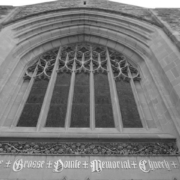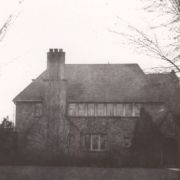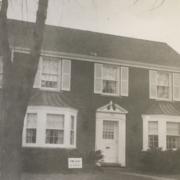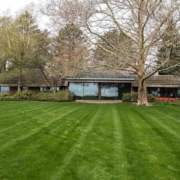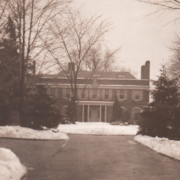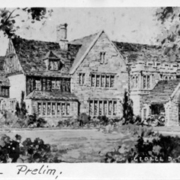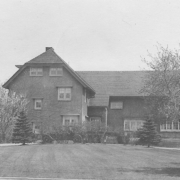Historical Architecture of Grosse Pointe – Memorial Church – Part 2
Last week we began a two-part series on the Grosse Pointe Memorial Church, located at 16 Lake Shore Drive. The origins of Grosse Pointe Memorial Church date back to 1865. Like other churches in the area Grosse Pointe Memorial Church has undergone many iterations from where it began to the church it is today. In total the church has had three buildings, been located on two sites, and has changed its name several times.
This week we continue our presentation as we take a more in depth look at the design of the church, including the work of the other designers who were involved with the project.
In 1923, renowned church architect William E. N. Hunter was hired to design the new Grosse Pointe Memorial Church and four additional buildings. Constructed between 1923 and 1927 the buildings we designed to have a unified composition. The Corrick Brothers Company was awarded the construction contract – on May 2, 1926, the cornerstone of the church was laid. The photos (below) are courtesy of © Indiana Limestone Company. Courtesy, Indiana Geological and Water Survey, Indiana University, Bloomington, Indiana.
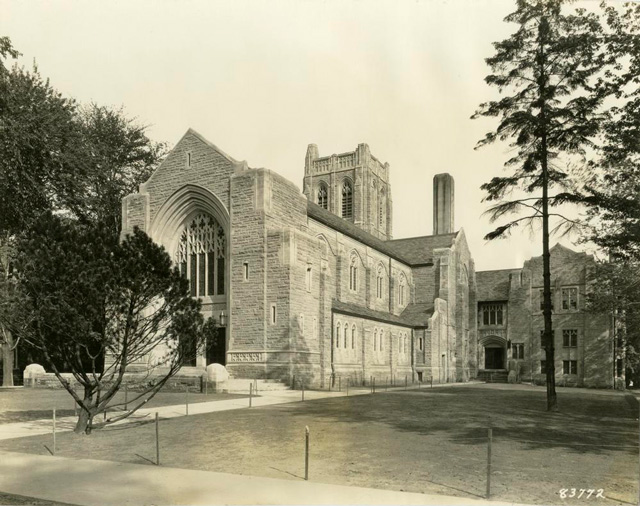

Grosse Pointe Memorial Church is striking Neo-Gothic Revival structure. It has an asymmetrically configuration with a cross gable slate roof. It is constructed of Indiana limestone and trimmed with smooth sandstone. At the time of construction, nationally Indiana limestone was commonly used in the construction/finishing of residences, churches, universities, museums, offices, public, and municipal buildings. Many of these buildings were designed by nationally recognized architects from the late 1800s to the mid-1900s. Source: Indiana University Bloomington. The design features multiple gables, the side elevations have four bays with pairs of stained-glass clerestory windows, and a massive seventy-eight feet high square bell tower – the forty-seven carillon bells were cast by Gillett & Johnston, bell founders, of Croydon, England. The entrance is approached from the side, up three stone steps to a stone platform. The main doors are flanked by old English-style lanterns, while the name “Grosse Pointe Memorial Church,” is inscribed over the doors above the moldings and carved heraldic shields. The exterior also has many beautiful stone carvings, over 40 shields decorate the exterior, along with foliation, grapes, and vines. Source: National Register of Historic Places Registration Form, 1993. Photos courtesy of Katie Doelle.
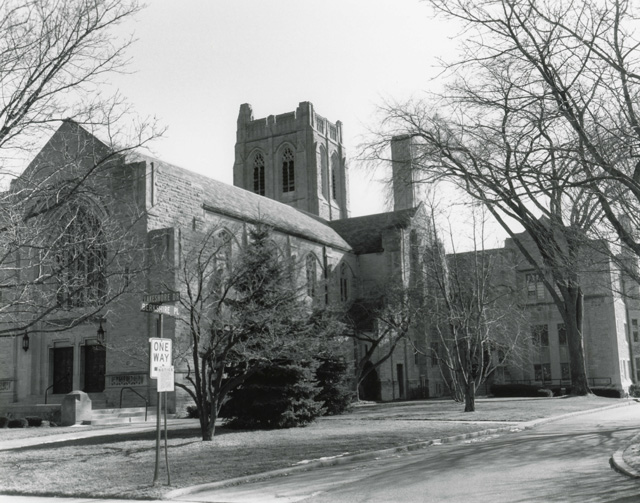
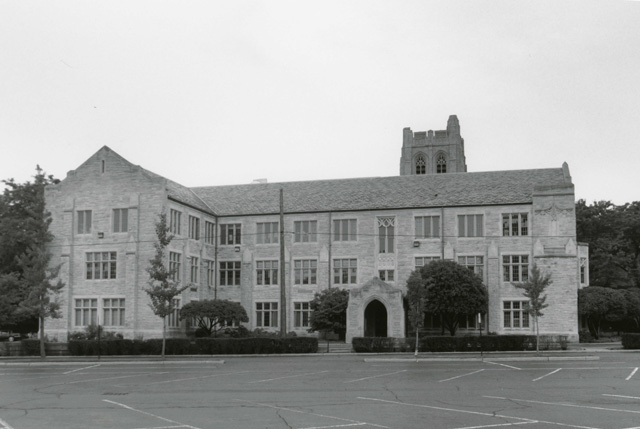
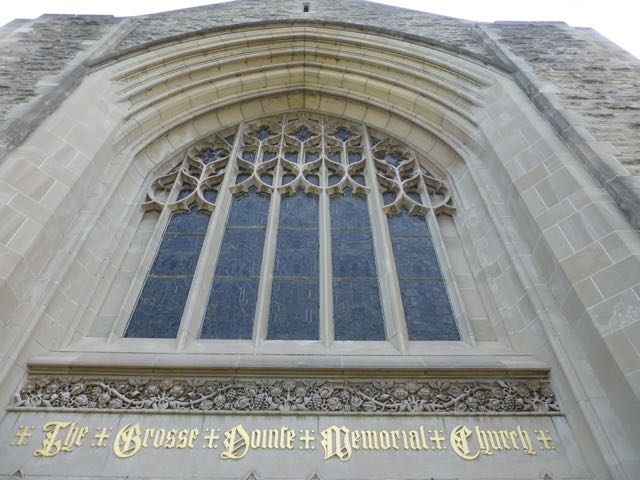


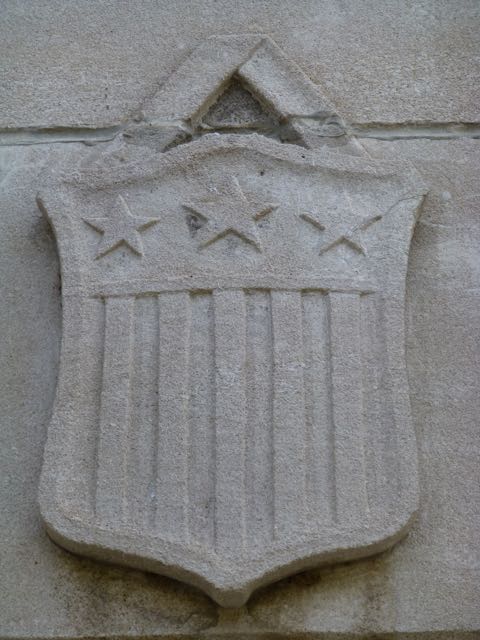
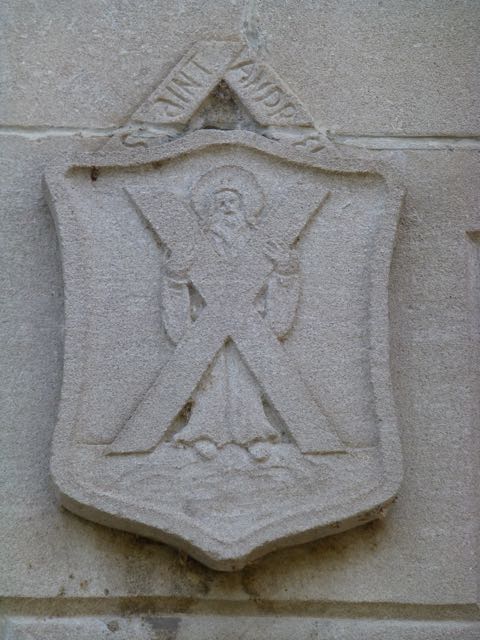
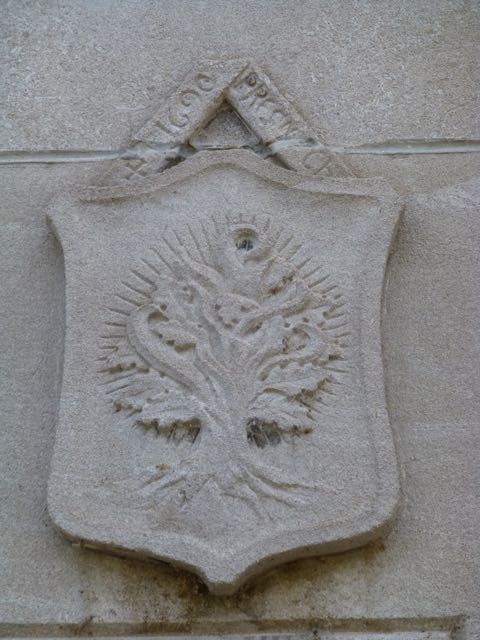

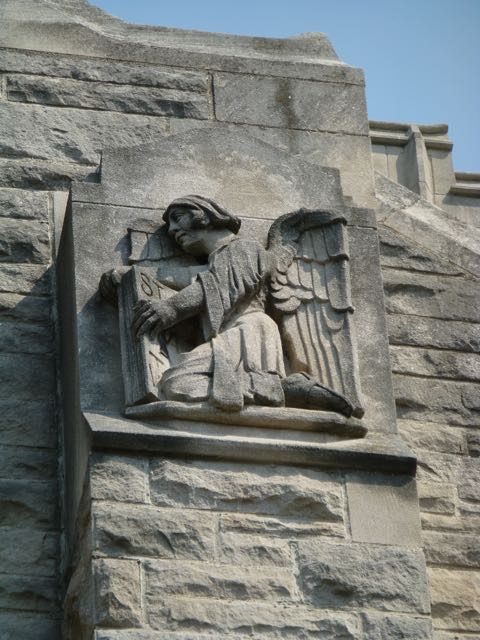
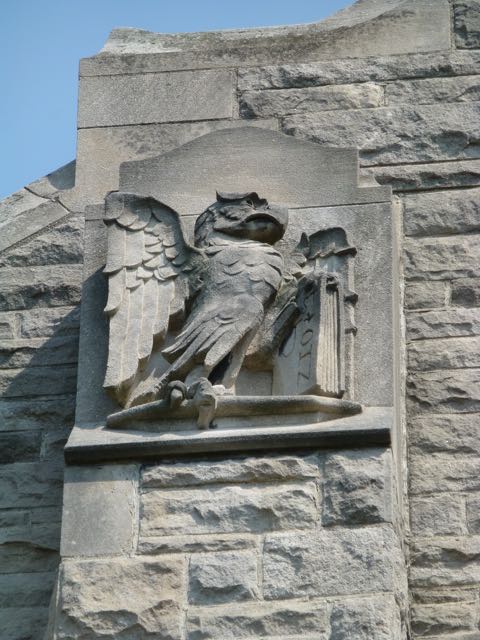
Upon entering the church, the entrance into the narthex features two large doors that contain twenty-four stained glass panels depicting “The Quest of the Holy Grail.” The interior of the church is then laid out in a Latin cross configuration, with a large central nave that rises to a stone ribbed vaulted ceiling. The aisles are separated from the nave by masonry pillars, arched entryways are present on each side of the church, and stained-glass windows in the clerestory are framed by stone surrounds. The Aeolian organ and choir loft are situated in a balcony in the narthex, additional balconies flank the front portion of the nave, while the altar is set within an arched chancel area. Throughout the interior is beautifully carved wood which features recurring symbols from the exterior (vines and the branches), which are present in not only the woodcarvings, but also in the plaster, stone, and on the wrought iron.
It is acknowledged the majority of the works of art that are found inside the church today were presented as memorials, including sculptures, paintings, the Moller organ (installed in 1959), the carillon bells, individual stained glass windows, oriental rugs, along with the twenty-four stained glass panels depicting “The Quest of the Holy Grail”, which were donated in memory of Mr. James Thayer McMillan having been made by Henry Willet of Philadelphia in 1947. It is reported a large leather-bound memorial book, kept in the church’s library, lists the names of the donors of each gift. Source and images: National Register of Historic Places Registration Form, 1993.

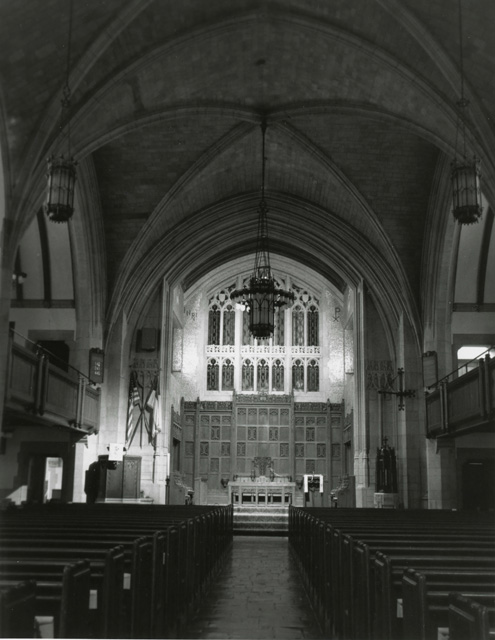
Aside from the work by architect William Hunter, the Grosse Pointe Memorial Church displays the work by other skilled craftsmen, including – Henry Willet of The Willet-Stained Glass and Decorating Co. of Philadelphia, while German Master Woodcarver Alois Lang created the detailed wood carvings – Grosse Pointe Memorial Church is known for the quality of its carvings and stained-glass windows.
The Willet-Stained Glass and Decorating Co. was founded in 1898, by William Willet, an artist and leader in the American Gothic Movement. Working with noted architect Ralph Adams Cram, we understand “William Willet created traditional designs that rivaled the works found in the finest European Cathedrals. He designed windows of painted, richly colored antique glass with his figures reflecting a Renaissance influence that was the taste of the times. It is said Willet was inspired by European work and the Pre-Raphaelites.” Source: buffaloah.com It is also understood that he was responsible for making the first medallion window in America (in the First Presbyterian Church of Pittsburgh, Pennsylvania) and the second in the Calvary Episcopal Church of Pittsburgh, Pennsylvania. At the time of his death (in March 1921) William Willet was considered one of the most important stained-glass artists in America. After his death William’s son Henry Lee Willet took over the studio. It is reported, “the Willet-Stained Glass and Decorating Co. was given the contract to design all the windows for the church and worked out the iconography and sketches in 1925 and 1926. The windows were executed as donors became available. Later works, the entrance doors (1947), the mosaic work at the back of the altar (c. 1959), and the Barbour Chapel doors (c.1962) were also created by The Willet-Stained Glass and Decorating Co., thereby maintaining continuity to the design.” Source: National Register of Historic Places Registration Form, 1993. Today the company is still going strong, known as Willet Hauser Architectural Glass. Source: Wikipedia.
Master woodcarver Alois Lang was born in 1872, Oberammergau in Bavaria, a town long known for its excellence in wood carving. Having undertaken an apprenticeship with his cousin, aged 14, he spent one year’s study in Florence, Italy working with the great wood sculptor Fortunato Galli, before relocating to the United States in 1890. It is reported one of his earliest positions was in Boston carving elaborate mantelpieces for Back Bay families. In 1903, Lang joined the American Seating Company in Wisconsin, and then moved to Grand Rapids when the firm relocated to Michigan in 1927. Lang became known as a prominent ecclesiastical woodcarver. An article in a 1946 newsletter states that the Michigan Academy of Science, Arts and Letters presented him with a special award for his contribution to art in Michigan. His carvings can be found in numerous buildings, mostly churches, throughout Metro Detroit and the U.S. Lang has been described as one of the artists responsible for bringing medieval art of ecclesiastical carving to the United States. Source: Wikipedia. Lang’s work inside the Grosse Pointe Memorial Church includes wood carvings on the reredos, clergy and choir stalls, the lectern, and the pulpit.
The Grosse Pointe Memorial Church has a special place in the history of Grosse Pointe. It was listed as a designated Michigan Historical site in 1990 and listed on the National Register of Historic Places in 1993.
*Photos courtesy of the Higbie Maxon Agney archives unless stated.** Research, information, and data sources are deemed reliable, but accuracy cannot be fully guaranteed.
Written by Katie Doelle
Copyright © 2023 Katie Doelle

